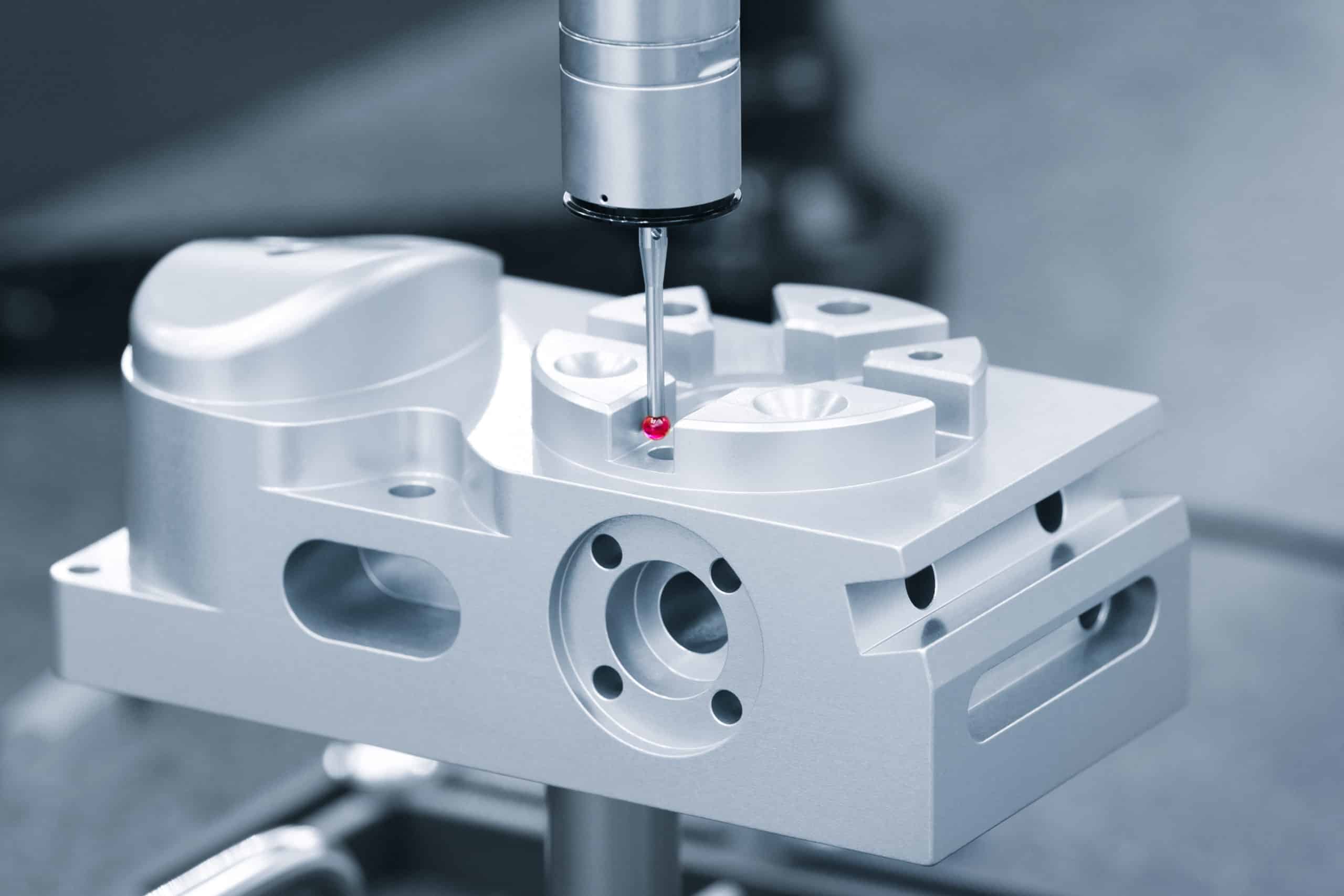What is CNC Milling?
CNC milling is a modern, precise, and advanced method of the manufacturing process. It uses sophisticated machine tools and computer software to create even the most intricate CNC-milled parts and components. By automating the milling program, a CNC machine can achieve unmatched precision, speed, and versatility. That’s why CNC Machining is an essential technique in modern manufacturing.
CNC machine uses a cutting tool or milling cutter to remove material from a workpiece by controlling its movement along several axes. First, a digital design becomes instructions for the CNC milling machine. These instructions guide the machining in shaping the workpiece to the desired form.
Table of Contents
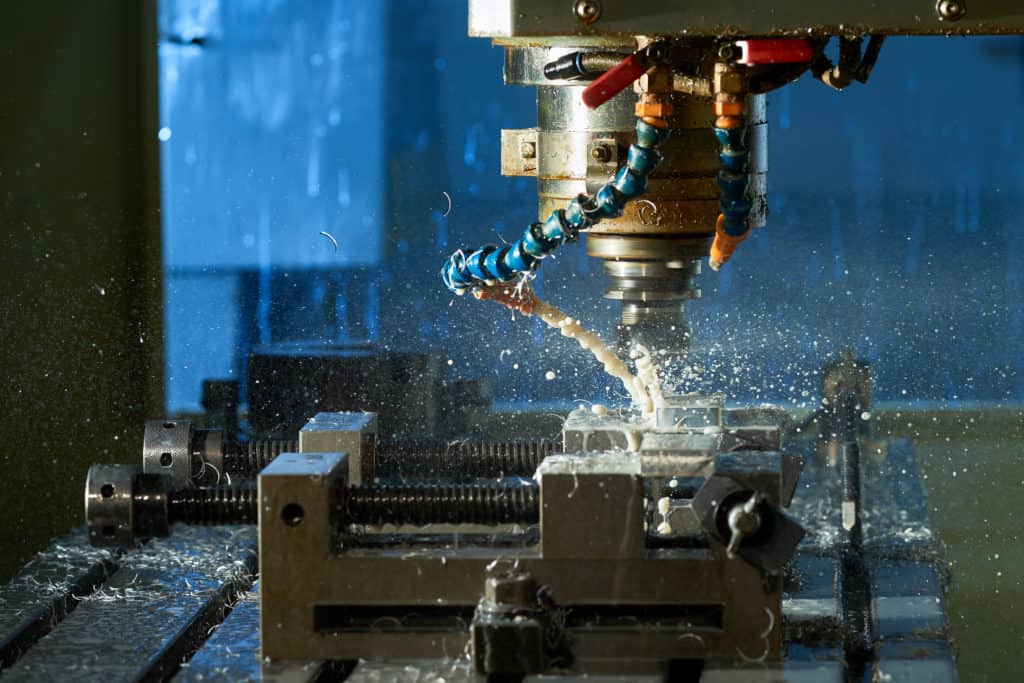
The importance of CNC milling
The CNC milling process is significant in many industries due to its precision, versatility, and efficiency. Some of the main sectors that depend on the CNC milling process include the following:
Aerospace: CNC milling is instrumental in producing components such as turbine blades, engine casings, and structural parts. The high precision and tight tolerances required in this industry make CNC milling process an ideal solution.
Automotive: CNC milling is used extensively in the automotive industry for creating engine components, suspension parts, and other critical elements requiring high accuracy and consistency.
Medical: Medical device manufacturers rely on the CNC milling process to create advanced surgical instruments, implants, and diagnostic tools, which are precise and consistent, meeting the medical industry’s exact standards.
Electronics: CNC milling process make accurate and detailed electronic parts such as circuit boards and enclosures.
Custom Manufacturing: The CNC milling process is a standard method used in custom part manufacturing services to create unique parts and components that meet specific requirements. It can produce personalized items or small batches of specialized products without sacrificing precision or quality.
Basics of CNC Milling
The CNC milling process uses computer numerical control (CNC) technology to control the movement of cutting tools, or cutters, along multiple axes. The tools remove material from a workpiece to create a desired shape or design. You must first make a digital design using a CNC milling machine. Then, the machine will use that design to cut the workpiece into the right shape.
CNC Milling process work steps
You would use CAD (Computer-Aided design) software to create a digital format for a 3D model of the desired part or component.
Converting design: The CAD file is transformed into a machining program using CAM (Computer-Aided Manufacturing) software, which generates G-code instructions for the milling processes.
Setting up the machine: The workpiece attaches to the machine bed, and the appropriate tools go into the spindle.
Running CNC program: The CNC milling machine reads the G-code instructions and moves the cutting tools accordingly, removing material from the workpiece to create the desired shape.
CNC milling vs. Manual Milling
CNC milling offers several advantages over manual ones:
Precision: CNC millers can achieve much higher accuracy and consistency in part production than manual ones, thanks to computer control and automation.
Speed: CNC millers eliminate manual adjustments and operator intervention during milling, allowing parts to turn out faster.
Flexibility: CNC miller is more versatile than manual mills as they can handle complex shapes and conveniently change between toolings.
Reduced human error: By automating the machining process, CNC equipment minimizes the risk of errors resulting from manual machining operations.
Types of CNC Milling (vertical and horizontal)
There are two types of milling machines: vertical and horizontal.
Vertical CNC milling machine: Vertical mill has a spindle that is oriented vertically to hold the cutting tools. The machine bed moves along the X and Y axes, while the spindle moves along the Z axis to operate on the workpiece. They primarily serve for angular and face milling operations on flat surfaces.
Horizontal CNC milling machine: The workpiece sits on a table that moves along the X and Y axes while the spindle is oriented horizontally. Horizontal mills are best for cutting large parts, side milling, and slot milling.
CNC milling machine components
Some key components of CNC mills include:
Machine bed: The milling machine’s foundation supports the workpiece and provides stability during manufacturing.
Milling spindle: The rotating component that holds the cutting tools and performs the milling operations.
Cutting tools: Various cutters, such as plain milling cutters, face milling cutters, and formed milling cutters, are used to remove material from the workpiece.
Axes: The movement of cutting tools and workpieces in a milling machine relates to three or more axes, namely X, Y, and Z.
CNC controller: The computer system interprets the CNC machine program and sends instructions to the milling machine to control its movements and operations.
Automatic tool changer: A component that allows the milling machine to switch between different cutters automatically, improving efficiency and reducing downtime.
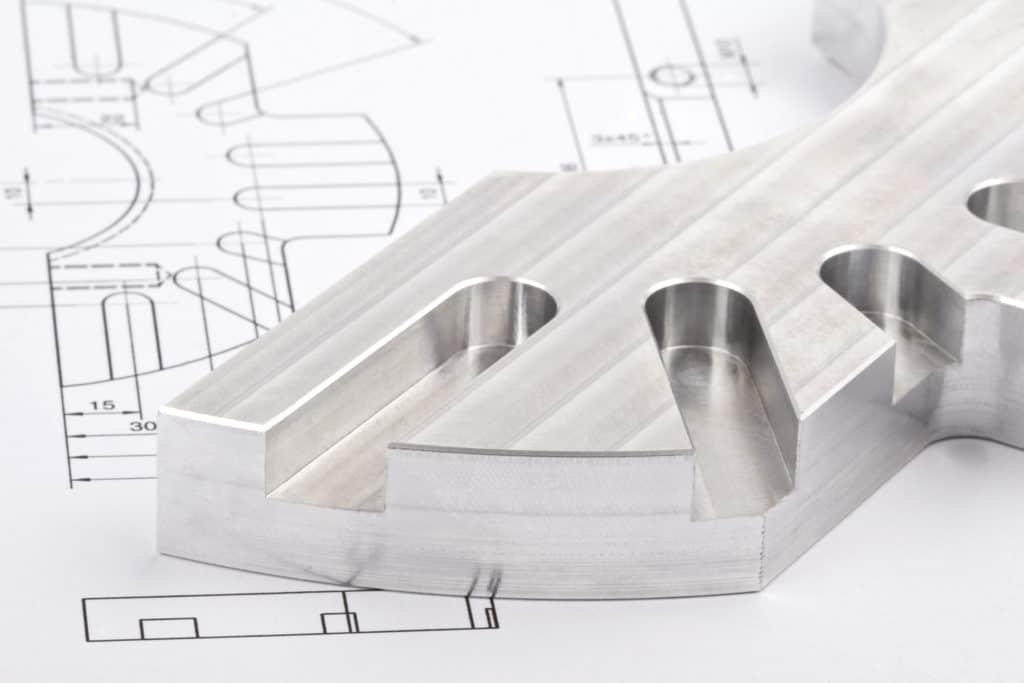
The Milling Process
Milling operations and tools (plain, face, form, and gang milling)
Plain milling: Also known as slab milling, this operation involves cutting a flat surface parallel to the machine bed using simple milling cutters.
Face milling: In face milling, the cutting action is perpendicular to the workpiece’s surface, creating a smooth, flat finish. Face milling cutters are necessary for this operation.
Form milling: Form milling involves shaping the workpiece using formed milling cutters that have a specific profile, such as a gear tooth shape or a dovetail.
Gang milling: Gang milling involves using multiple milling cutters mounted on the same arbor to perform numerous milling operations simultaneously. This technique enables you to create complex shapes and profiles.
Types of milling tools (single angle, formed, and face milling cutters)
Single-angle milling cutters: These cutters have a specific angle on their cutting edge and are ideal for operations such as chamfering, beveling, and creating angular features.
Formed milling cutters: Formed cutters are designed with a specific profile to create specialized shapes and features on the workpiece, such as gear teeth or dovetails.
Face milling cutters: Face milling cutters have cutting edges on their face and circumference, and they are used for creating smooth, flat surfaces perpendicular to the workpiece’s surface.
Machine spindle and bed roles
Machine spindle: The machine spindle holds the cutting tools and rotates them during milling. The quality and efficiency of the milling operation are affected by speed, torque, and rigidity.
Machine bed: During milling, the machine bed offers stability and support to the workpiece while moving along the X and Y axes to ensure accurate positioning of the workpiece with the machining tools.
CNC programming and machine interface
The success of milling operations depends on CNC programming. This process is essential as it converts the CAD design into machine-readable instructions, typically written in G-code. The CNC program controls the movement of the cutting tools and workpieces, ensuring the milling operation runs accurately and efficiently.
The machine interface is where users interact with the CNC milling machine. It enables them to input the CNC program, keep track of the milling process, and make modifications if required. A simple interface is necessary for smooth operation and for reducing the chances of errors while milling.
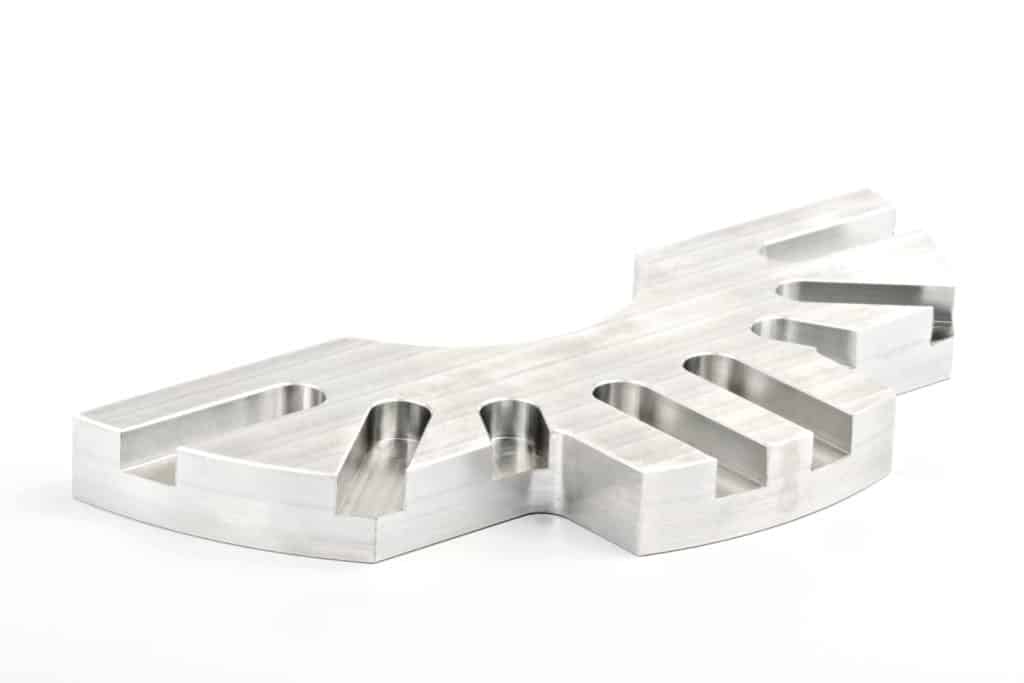
CNC Milling Applications
CNC-milled components
CNC milling is a versatile process capable of creating a wide range of items and components, including:
Engine parts: CNC milling processes can create complex engine components such as pistons, connecting rods, and cylinder heads.
Aerospace components: High-precision parts like turbine blades, engine casings, and structural elements use CNC milling processes.
Medical devices: Implants, surgical instruments, and diagnostic equipment requiring intricate detailing and precision manufacture through CNC milling.
Electronic components: CNC milling machines can create circuit boards, housings, and other intricate parts.
Mold and die components: CNC milling creates pieces for injection molds and metal dies, which produce other parts and products.
Industries Applications
CNC milling finds wide application across various industries due to its accuracy, flexibility, and efficiency. Some key initiatives include:
Aerospace: Aerospace components require high precision and tight tolerances. CNC milling processes can manufacture turbine blades, engine casings, and structural parts.
Automotive: The automotive sector extensively utilizes the milling processes to create engine components, suspension parts, and other critical elements that demand high precision and consistency. CNC milling machines offer speed and repeatability, making them essential tools for automotive part production.
Custom Manufacturing: Clients often require unique parts and components tailored to their specific needs in the custom manufacturing sector. The milling method provides the flexibility to produce one-of-a-kind pieces or small batches of specialized products without sacrificing precision or quality. This capability makes the milling method a crucial tool for custom manufacturing services.
CNC Turner vs. CNC Miller
Differences between CNC turning and milling
CNC turning and milling are two distinct machining processes used to create a variety of parts and components. Though both approaches use CNC technology for precise and automated machining, they differ in several ways.
Motion: CNC turning is a process where cutting tools rotate as the workpiece cuts, but in milling, the workpiece doesn’t move, and the cutting tools move and rotate to remove material.
Geometry: The primary use of CNC turning is to make cylindrical or round parts. On the other hand, the milling process can create various shapes and geometries, such as smooth surfaces, slots, and detailed 3D profiles.
Machine type: CNC turning is a process done on a CNC lathe, whereas the milling occurs on a CNC milling machine that may be either vertical or horizontal.
Cutting tools: CNC turning involves using a cutting tool with only one point. In contrast, CNC milling utilizes different kinds of milling cutters, such as face, plain, and formed milling cutters.
When to use turning vs. milling
Choosing between CNC turning and milling depends on the specific requirements of the part or component manufactured. Here are some guidelines to help determine which process is more suitable:
Use turning for:
Parts with cylindrical or round shapes
Components that require a high surface finish and tight tolerances
Operations such as external and internal diameter cutting, grooving, and threading
Use milling for:
Parts with complex geometries and multiple features, such as slots, pockets, and intricate 3D profiles
Flat surfaces and angular milling operations
We produce customized parts and components that demand accurate positioning and flexibility.
Manufacturers may need to combine turning and milling when producing a complex part with cylindrical and non-cylindrical features. These capabilities can help manufacturers achieve efficiency, precision, and flexibility in their production processes.
Advantages and Challenges
Benefits of using CNC milling machines
CNC machines offer numerous advantages over traditional manual milling, making them indispensable in modern manufacturing. Some of the key benefits include:
Precision and accuracy: CNC milling machines can achieve tight tolerances and produce high-quality parts consistently, thanks to their computer numerical control and advanced cutting tools.
Versatility: CNC milling machines can produce complex shapes and designs, making them useful for various industries and applications.
Efficiency: CNC milling machines can operate continuously, 24/7, with minimal human intervention, resulting in increased productivity and reduced lead times.
Automation: Due to the automated nature of CNC milling, there is no human error and no requirement for skilled labor, resulting in higher quality and consistency of the finished parts.
Flexibility: CNC milling machines are suitable for small-batch production and manufacturing services because they can effortlessly change between different toolings and adjust to other materials.
Potential difficulties of CNC milling
Despite its numerous advantages, the milling process also presents some challenges that manufacturers must address:
Initial cost: CNC milling costs can be expensive compared to manual mills. However, the long-term benefits of increased productivity, precision, and efficiency often outweigh the initial investment.
Maintenance: CNC milling machines require regular maintenance to ensure optimal performance and prolong lifespan. This may include regular calibration, lubrication, and replacement of worn-out components.
Learning curve: Operating a CNC milling machine requires a specific skill set and knowledge of CNC programming, which can be challenging for newcomers. However, various training resources and courses are available to help individuals learn the necessary skills.
Material limitations: Although CNC milling machines can work with a wide range of materials, specific materials may be challenging to machine due to their hardness or other properties, which can affect the quality and efficiency of the milling process.
By understanding and addressing these challenges, manufacturers can leverage the full potential of CNC milling machines and enjoy their numerous benefits in creating high-quality parts and components across various industries.
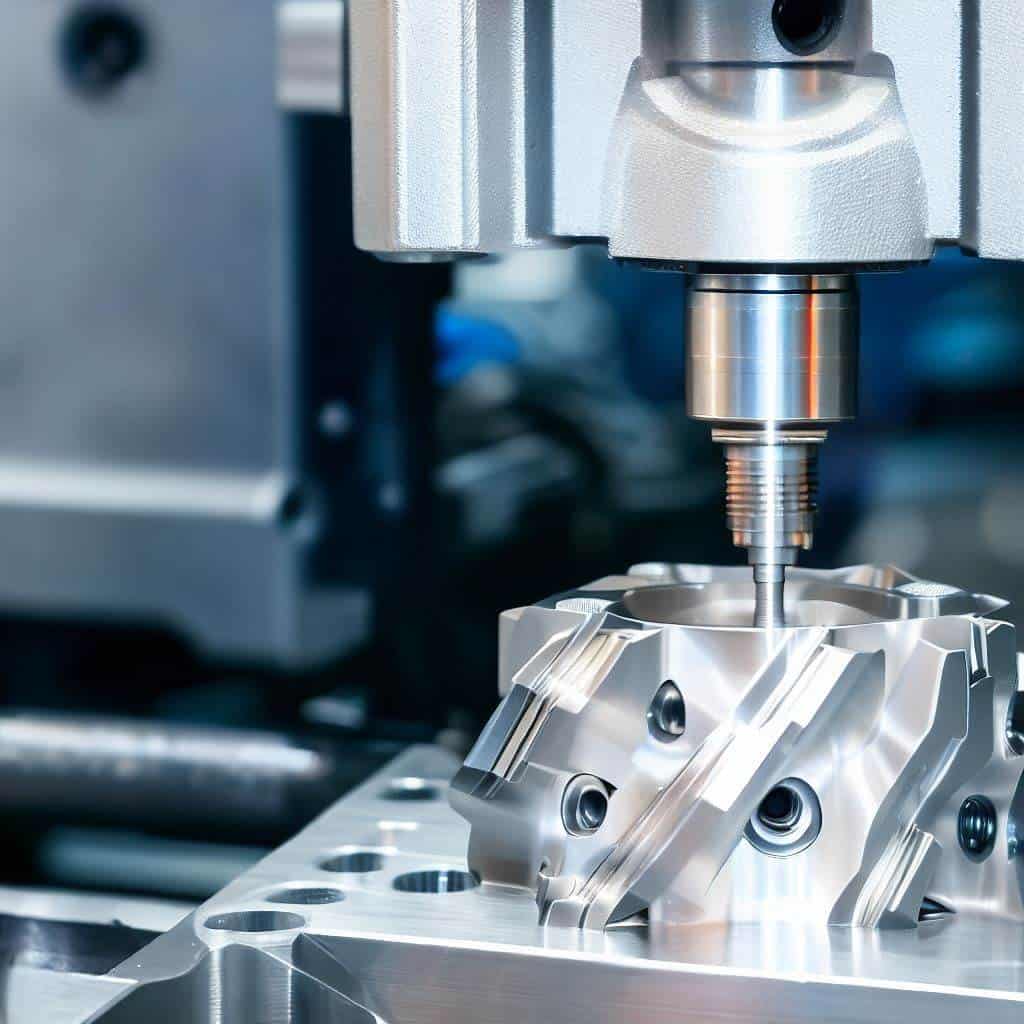
Conclusion
Recap of key points
Simply put, the CNC milling process is an essential and adaptable process in modern manufacturing that provides several advantages compared to traditional manual milling. It enables the production of elaborate designs, complicated geometrics, and high-quality parts that are precise and accurate. CNC milling machines are utilized in various industries, including aerospace, automotive, and custom manufacturing, to manufacture various components.
Different types of CNC milling machines, such as vertical and horizontal, use various machine tools and milling operations like plain, face, form, and gang milling. CNC programming guides the milling process by translating CAD designs into machine-readable instructions, ensuring precise and efficient operations.
The future of the CNC milling technique
The future of the CNC milling technique looks promising due to several developments and innovations on the horizon as technology continues to advance.
The milling process will become more accessible and more efficient with the development of better software and machine interfaces. This will allow operators to create and produce intricate parts with greater ease.
Incorporating additive manufacturing, artificial intelligence, and machine learning into CNC milling machines will improve their capabilities, increasing precision, efficiency, and automation through advanced technologies.
To make manufacturing more sustainable, we can use CNC milling machines that are energy-efficient and eco-friendly. This will help reduce the environmental impact of industrial processes.
Manufacturers can drive innovation and competitiveness in the global market by addressing the challenges associated with the milling technique and embracing its advancements to leverage its full potential.
Frequently asked questions
CNC milling is performed using a machine tool, either horizontal or vertical, which holds and moves cutting tools to shape the workpiece based on the commands from the milling program.
Horizontal milling machines have a spindle oriented horizontally, while vertical milling machines have a spindle oriented vertically. Horizontal mills are better suited for more extensive and heavier workpieces. They can carry out intricate operations, whereas vertical mills are commonly used for smaller and lighter workpieces and are more widely used for general-purpose milling.
CNC milling is when you use a computer to control the milling machine and cutters. It is better than manual milling because it is more accurate and faster.
Bed vertical mills have a fixed spindle and a movable table, while vertical turret mills feature a rotating turret that houses the spindle. Turret vertical mills are more versatile and allow greater flexibility in various milling operations.
A CNC mill is a milling machine that utilizes computer numerical control to automate the operation process. This results in improved precision, speed, and efficiency compared to traditional milling machines, which rely on manual power and adjustments.
Yes, vertically oriented milling machines can perform various milling processes, such as face milling, angular milling, and form milling, depending on the type of cutters and CNC program used.
Secondary or finishing processes, such as grinding or polishing, refine a part’s surface finish or dimensional accuracy after the primary milling operations have been completed.
Milling machines can be categorized based on the number of axes they have. A 3-axis machine operates on X, Y, and Z axes. In addition to these axes, a 4-axis device includes a rotary axis (typically A or B), enabling more complex operations. Meanwhile, a 5-axis milling machine can simultaneously move all five axes to produce intricate and complex parts with greater precision and efficiency.

